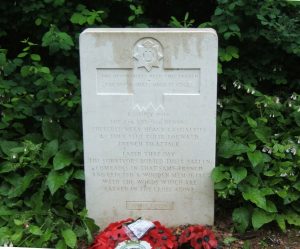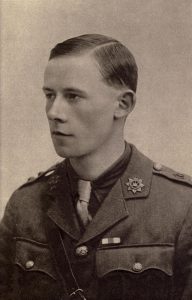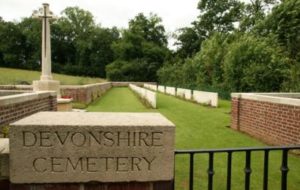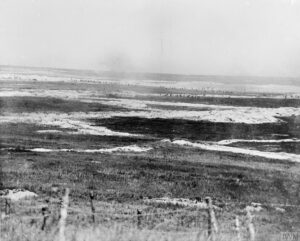Lieutenant William Noel Hodgson, M.C., 9th ( Service ) Battalion, Devonshire Regiment. He was killed in action in France on 1st July 1916, aged 23, on the first day of the Battle of the Somme. He was the son of the Rt. Rev. Henry Hodgson, D.D.,1st Bishop of St. Edmundsbury and Ipswich and Penelope Hodgson of Churchers College, Petersfield and is buried in Devonshire Cemetery, Mametz, Somme, France. He was born in Thornbury near Bristol on 3rd January 1893 but the family soon moved to Berwick. He was educated at Durham School and Oxford University wher he obtained a First in Classical Moderations and was staying on to do “Greats”. On the outbreak of War in 1914 he immediately volunteered and served in the 9th Battalion Devonshire Regiment. He landed in France on 28th July 1915 and fought in the Battle of Loos where he was awarded the Military Cross for holding a captured trench for 36 hours without reinforcements or supplies. He was then promoted to Lieutenant. Just before the Battle of the Somme his Battalion held a trench called Mansell Copse in front of the German positions in the village of Mametz. On studying a model of the proposed attack he saw that a particular German nest of machine guns would cause his men a problem if they were not neutralised. The bombardment left them untouched and severe casualties ensued when the attack went in. He was the Battalion bombing Officer and was killed with his servant by machine gun bullets from the very position he had identified beforehand whilst taking grenades to some of his men in a captured trench. His premonition had come to pass. He is recognised as one of the ” War Poets ” and had some of his stories and poems already publised in various periodicals under the pseudonym of Edward Melbourne. In 1917 his volume ” Verse and Prose in Peace and War ” was published posthumously and it contains his best known work ” Before Action ” . It is believed it was written as a premonition that he would died in the coming Offensive and the last line reads ” Help me to die, O Lord “. The poem was published two days before his death. All the Headstones in this cemetery are also inscribed ” The Devonshires Held This Trench, The Devonshires Hold It Still “. The photo shows troops attacking that morning over a very wide “no mans land” with little or no cover.







